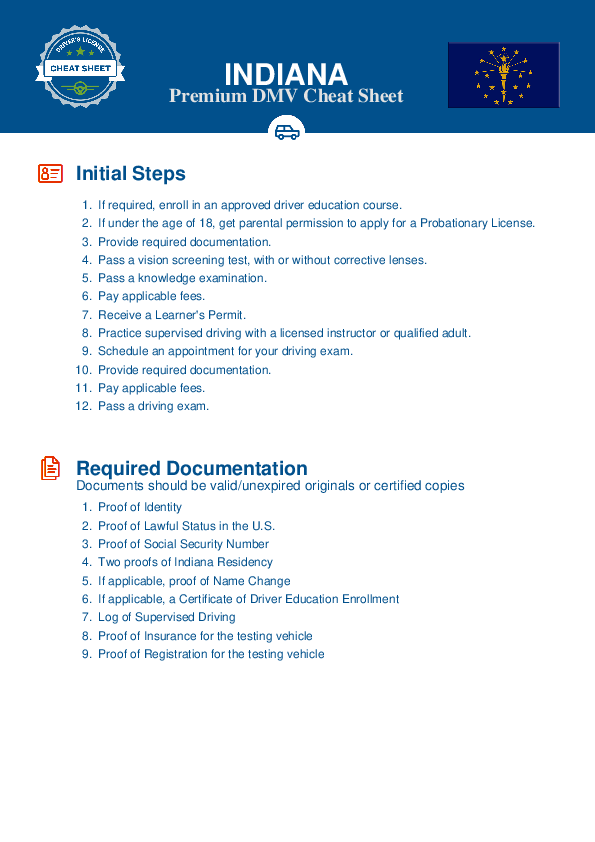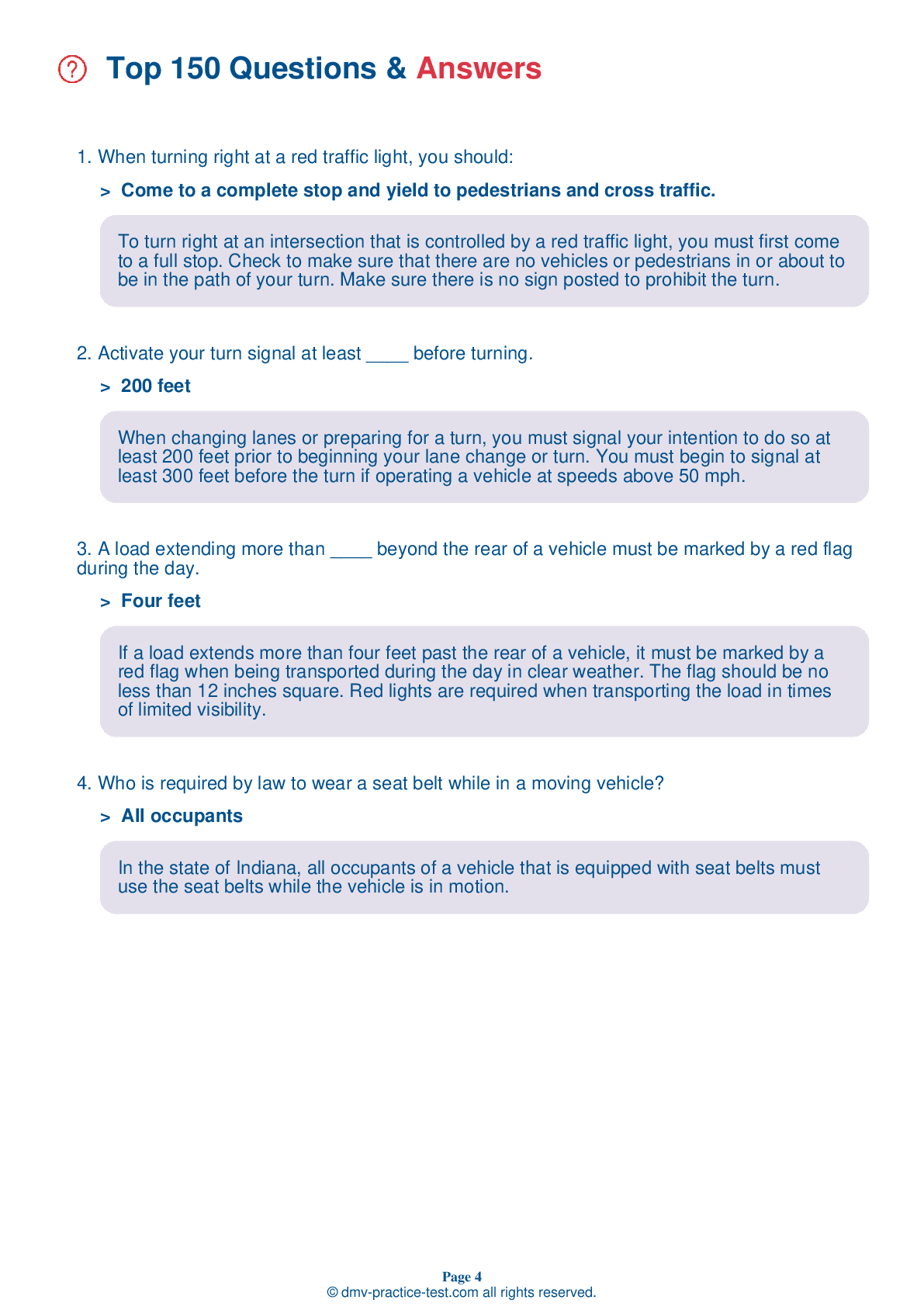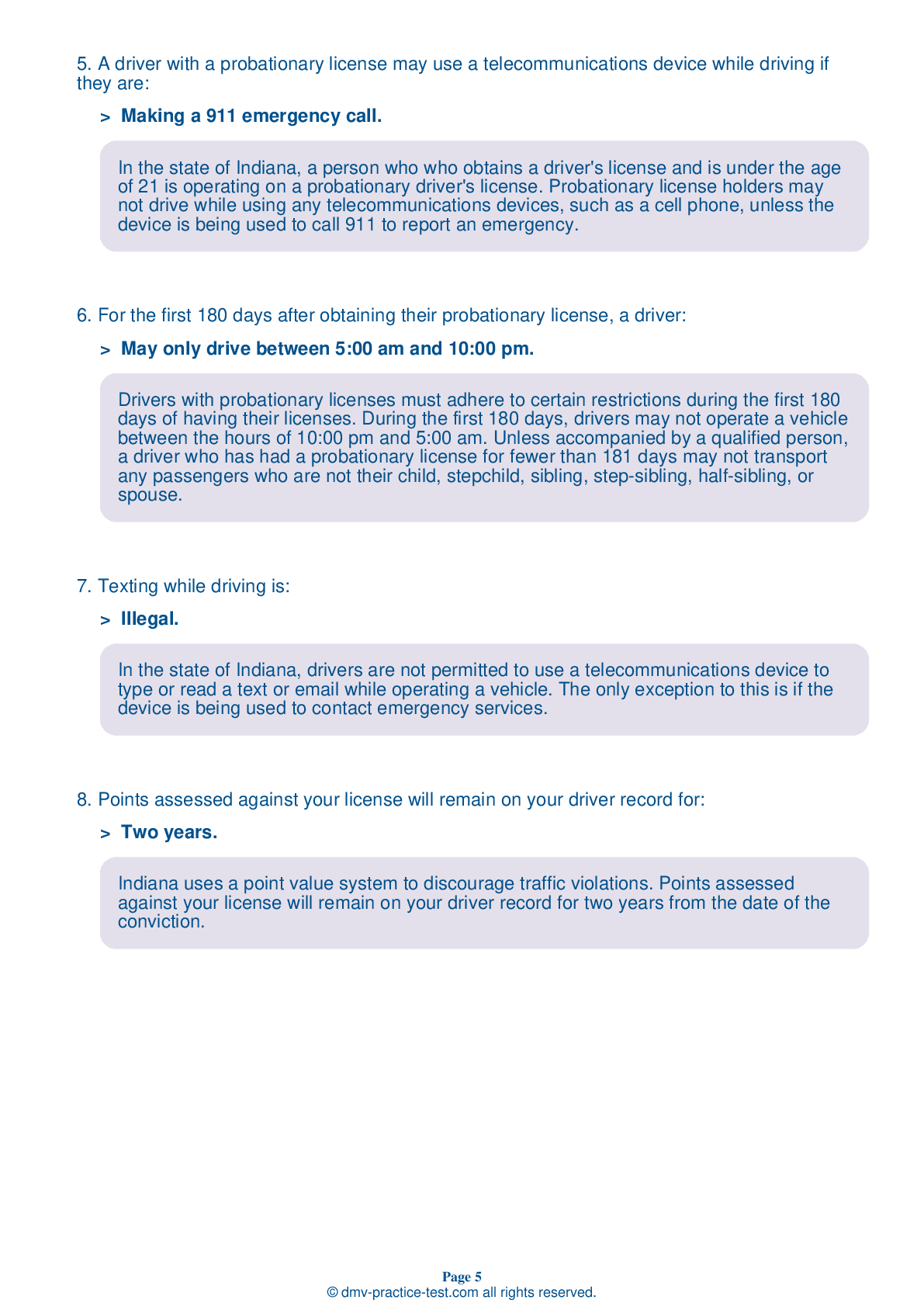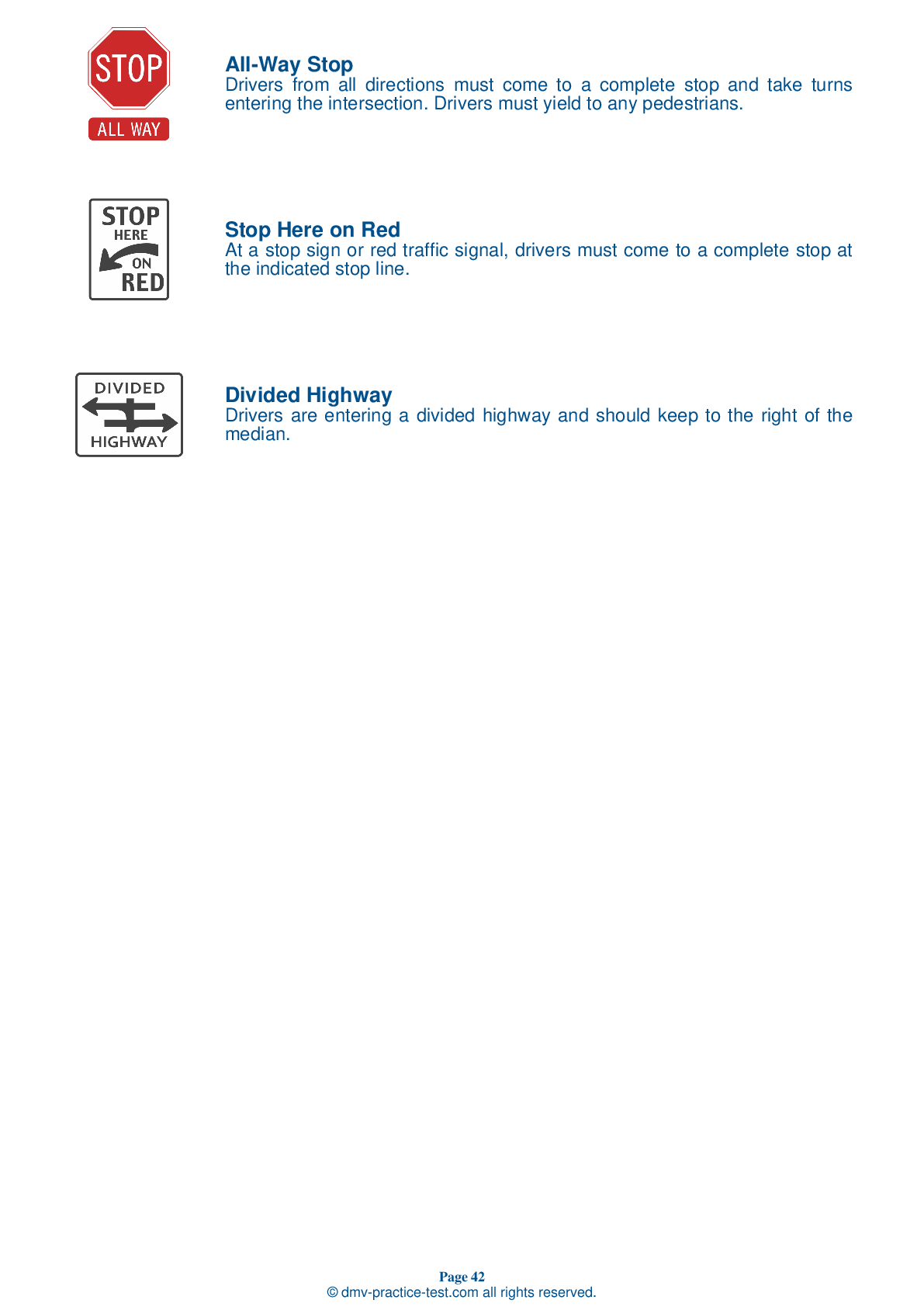FREE Indiana DMV Practice Test #16 Page 4 of 5
This set of Indiana DMV practise tests has been updated for January 2025. It includes questions based on the Indiana Driver Handbook's most significant traffic signals and laws for 2025. Use actual questions that are very similar (often identical!) to the DMV driving permit test and driver's licence exam to study for the DMV driving permit test and driver's licence exam.
On the practise exam, each question gets a tip and explanation to help you remember the concepts. The written component of the official Indiana DMV test will include questions about traffic rules, traffic signs, and driving statutes, as well as information from the Driver Handbook.
To obtain a passing grade, you must correctly answer 44 of the 50 questions. Take our DMV practise exam to help you prepare for your Indiana instruction permit or driver's licence.
The DMV exam is available in several languages.
Using any kind of testing assistance will result in an automatic fail, and the DMV may take additional action against your driver's licence, so stay away from it.
28 . You are driving on a narrow road when you meet an oncoming vehicle. You must:
On narrow roads, you must allow vehicles traveling in the opposite direction at least one-half of the main-traveled portion of the road. Both vehicles must have adequate space in order for the drivers to safely pass one another.
29 . This road sign means:
.png)
This sign marks parking spaces that are reserved for people with disabled parking permits.
30 . You may continue carefully through an intersection with a yellow light if:
If a steady yellow light appears when you are already within an intersection, you should continue through the intersection carefully.
31 . Regulatory signs are usually ____ and should always be obeyed.
Regulatory signs regulate the movement of traffic. They are usually white with black markings and must always be obeyed by motorists.
32 . If one of your tires blows out as you are driving, you should:
If a tire blows out while you are driving, hold the steering wheel tightly and keep the car headed straight down the road. Ease your foot off the gas pedal and do not apply the brakes until you have complete control. When the car is under control, brake gently and pull off the road at the nearest safe location.
33 . This sign means:
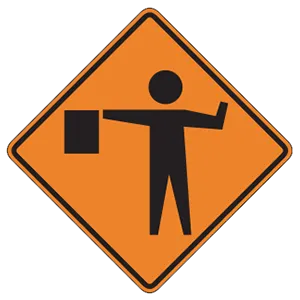
This sign indicates that there is a flagger ahead controlling traffic in a construction area.
34 . The best way to avoid hydroplaning is to:
When roads are wet, cars take a longer distance to stop and may skid on quick turns. Do not use cruise control when driving under wet or icy conditions. Reduce your speed and drive with caution.
35 . When changing lanes on a highway, you should:
Any time you want to change lanes, you should properly signal your intentions well in advance, check your mirrors, and check your blind spot. You can check your blind spot by glancing over your shoulder in the direction that you plan to move.
36 . The best way to deal with tailgaters is to:
Check the traffic behind you several times a minute to know if another driver is tailgating, approaching too fast, or trying to pass. If another car is following you too closely, slow down and let it pass. Most rear-end collisions are caused by vehicles following too closely.
37 . To check your blind spot when changing lanes to the left, you should glance:
To check your blind spot, glance over your shoulder in the direction that you want to move.
38 . When you see or hear an emergency vehicle coming, you should:
When driving on a two-lane roadway or undivided highway, you must yield to an emergency vehicle using its lights and/or siren, regardless of the direction from which it is approaching. Immediately drive as near as possible to the right side of the road and stop, taking care not to stop within an intersection.
See the exact questions that will be on the 2025 Indiana DMV exam.
99.2% of people who use the cheat sheet pass the FIRST TIME
LT gives us an insight on how the cheat sheet provided her with all the study questions she needed before taking her test.
Joe initially studied with the handbook and failed his test, he eventually found us online, studied and pass his test the first time around.
